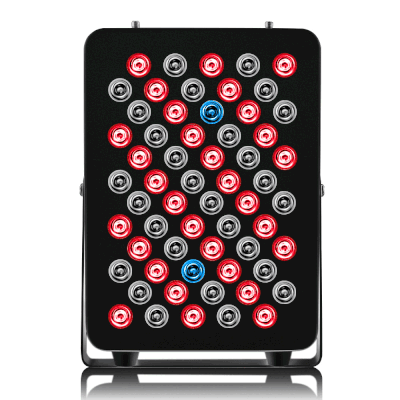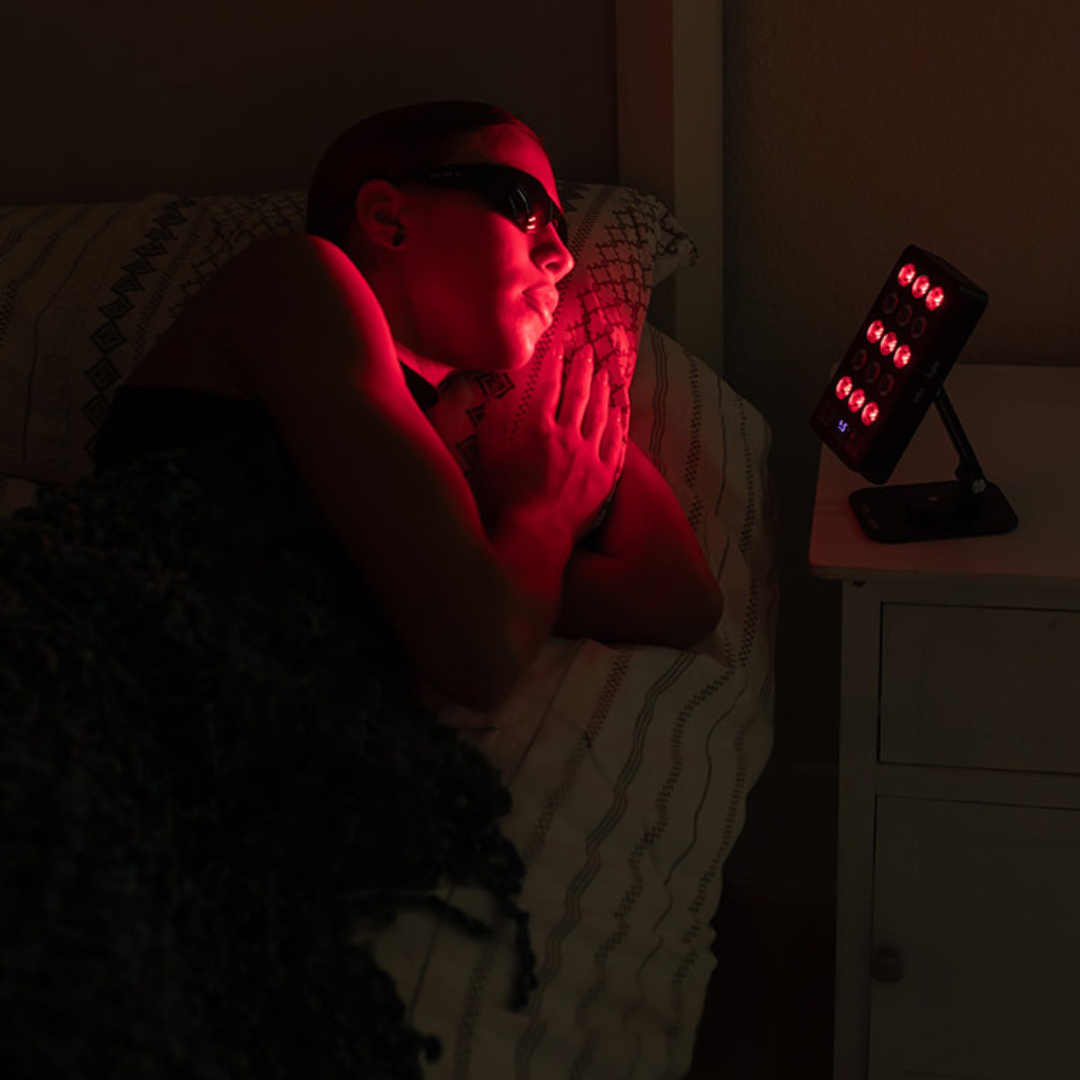![]() Free Shipping
Free Shipping ![]() Buy Now, Pay Later
Buy Now, Pay Later ![]() Eligible
Eligible
Red Light Therapy for Tendon Repair: A Science-Backed Guide to Healing

Tendon injuries—from the agonizing pain of tennis elbow to the persistent ache of Achilles tendinitis—are notoriously slow to heal. Traditional treatments often involve rest, anti-inflammatories, and physical therapy, but a revolutionary, non-invasive technology is gaining traction for its ability to accelerate healing at the cellular level: Red Light Therapy (RLT).
Also known as Low-Level Laser Therapy (LLLT) or Photobiomodulation (PBM), red light therapy is emerging as a powerful tool for those seeking to enhance their recovery from tendon damage. This article delves into the science, benefits, and practical application of RLT for effective tendon repair.
What is Red Light Therapy and How Does It Work?
Red Light Therapy involves exposing the skin to specific wavelengths of red and near-infrared (NIR) light. Unlike harsh UV light or surgical lasers, this low-energy light does not heat or damage tissue. Instead, it penetrates the skin and is absorbed by the mitochondria within our cells, often called the “powerhouses of the cell.”
This absorption triggers a series of biological events, primarily through the boosting of adenosine triphosphate (ATP) production. ATP is the fundamental energy currency of the cell. With more energy, cells can function more efficiently and repair themselves faster.
Dr. Michael Hamblin, a leading photomedicine researcher from Harvard Medical School, explains: “The primary chromophores [light-absorbing molecules] are thought to be mitochondrial cytochrome c oxidase. When light is absorbed, it leads to increased ATP production, a brief burst of reactive oxygen species, and an increase in intracellular calcium signaling.”
The Science of Light: How Red Light Therapy Heals Tendons
Tendons are dense, fibrous connective tissues that attach muscle to bone. Their limited blood supply is a major reason why they heal so slowly. Red and near-infrared light directly addresses this core issue. Here’s how it specifically benefits tendon repair:
1. Boosting Cellular Energy and Proliferation
The increased ATP production gives tendon cells (tenocytes) the energy needed to proliferate, synthesize new collagen, and carry out repair processes more vigorously.
2. Stimulating Collagen Production
Collagen is the primary structural protein in tendons. Studies consistently show that RLT upregulates collagen synthesis, which is crucial for restoring the tendon’s strength and integrity.
3. Reducing Inflammation
While acute inflammation is part of healing, chronic inflammation can hinder repair and cause pain. RLT modulates the inflammatory response, reducing the concentration of pro-inflammatory cytokines.
4. Enhancing Blood Flow and Angiogenesis
RLT promotes the formation of new capillaries (angiogenesis) in the damaged tissue. This improved circulation delivers more oxygen and nutrients while removing waste products, creating an optimal environment for healing.
5. Pain Relief
The therapy is believed to reduce pain by decreasing inflammation and potentially modulating pain signals in the nerves.
VELLGUS Elite V2
THE #1 RATED RED LIGHT DEVICE
Red Light Therapy vs. Traditional Tendon Treatments
How does RLT stack up against conventional methods? The key advantage is that it addresses the root cause of slow healing—cellular dysfunction—rather than just masking symptoms.
| Treatment Method | How It Works | Pros | Cons |
|---|---|---|---|
| Red Light Therapy | Stimulates cellular repair & reduces inflammation | Non-invasive, drug-free, minimal side effects, treats root cause | Requires consistency, initial cost for home devices |
| NSAIDs (Ibuprofen) | Reduces pain & inflammation | Readily available, fast-acting pain relief | Can have GI side effects, may mask pain leading to re-injury |
| Corticosteroid Injections | Powerful anti-inflammatory | Strong, localized pain relief | Weaken tendon over time, risk of rupture, temporary fix |
| Physical Therapy | Strengthens supporting muscles | Improves long-term function & prevents re-injury | Process can be slow, requires significant effort |
Practical Application: Using Red Light Therapy for Common Tendon Injuries
The protocol (wavelength, power density, and treatment time) is crucial for success. Generally, devices using wavelengths in the 630-680nm (red) and 800-880nm (near-infrared) ranges are most effective, with NIR penetrating deeper for tendons.
Here are general guidelines for common conditions:
- Tennis Elbow (Lateral Epicondylitis): Apply light directly to the point of maximum tenderness on the outer elbow. Treatment time: 5-10 minutes per session, daily.
- Achilles Tendinitis: Treat the painful area along the back of the ankle and heel. Due to its depth, NIR light is particularly beneficial. Treatment time: 10-15 minutes, daily.
- Rotator Cuff Tendinopathy: Position the light on the front and back of the shoulder to ensure coverage of the affected tendons. Treatment time: 10-15 minutes per area, daily.
- Patellar Tendinitis (Jumper’s Knee): Target the area just below the kneecap. Treatment time: 5-10 minutes, daily.
A quote from a 2017 systematic review in the American Journal of Physical Medicine & Rehabilitation: “LLLT effectively reduced pain and improved functional outcomes in patients with tendinopathy… with optimal doses of laser light ranging between 3 and 9 joules per point.”
What to Look for in a Red Light Therapy Device
If you’re considering a home device, focus on these key parameters:
- Wavelength: Ensure it emits red (630-660nm) and/or near-infrared (810-850nm) light. NIR is essential for deeper tendon issues.
- Power Density (mW/cm²): Higher power density means shorter treatment times and potentially more effective sessions. Look for devices with a solid output.
- Treatment Area Size: For larger areas like the shoulder, a panel is better. For elbows or ankles, a smaller, more targeted device may suffice.
- FDA-Cleared: Devices that are FDA-cleared as wellness or medical devices have undergone testing for safety and performance.
Conclusion: A Brighter Future for Tendon Healing
Red light therapy represents a paradigm shift in managing tendon injuries. By harnessing the power of specific light wavelengths to stimulate the body’s innate healing mechanisms, it offers a safe, non-invasive, and scientifically-backed approach to reducing pain, decreasing inflammation, and accelerating the repair of damaged tendon tissue.
While it is not an instant cure, consistent use of RLT—especially when combined with progressive loading and physical therapy under professional guidance—can significantly shorten recovery time and help you return to a pain-free, active life.








